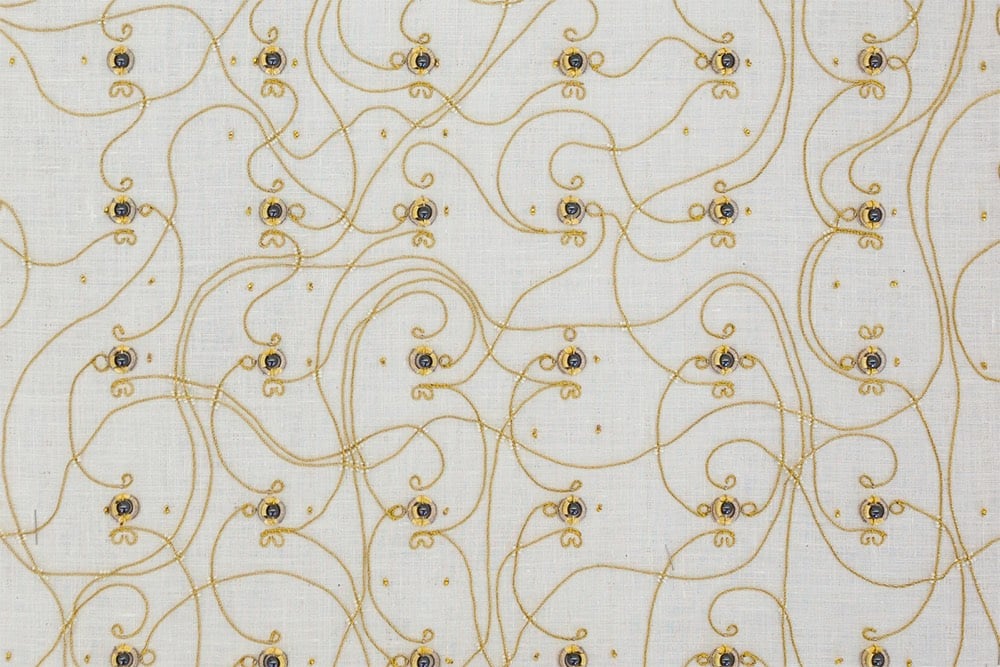The Embroidered Computer
Artists Irene Posch & Ebru Kurbak have built The Embroidered Computer, a programmable 8-bit computer made using traditional embroidery techniques and materials.


Solely built from a variety of metal threads, magnetic, glas and metal beads, and being inspired by traditional crafting routines and patterns, the piece questions the appearance of current digital and electronic technologies surrounding us, as well as our interaction with them.
Technically, the piece consists of (textile) relays, similar to early computers before the invention of semiconductors. Visually, the gold materials, here used for their conductive properties, arranged into specific patterns to fulfill electronic functions, dominate the work. Traditionally purely decorative, their pattern here defines they function. They lay bare core digital routines usually hidden in black boxes. Users are invited to interact with the piece in programming the textile to compute for them.
The piece also slyly references the connection between the early history of computing and the textile industry.
When British mathematician Charles Babbage released his plans for the Analytical Engine, widely considered the first modern computer design, fellow mathematician Ada Lovelace is famously quoted as saying that ‘the Analytical Engine weaves algebraic patterns, just as the Jacquard loom weaves flowers and leaves.’
The Jacquard loom is often considered a predecessor to the modern computer because it uses a binary system to store information that can be read by the loom and reproduced many times over.
See also Posch’s & Kurbak’s The Knitted Radio, a sweater that functions as an FM radio transmitter.





Stay Connected